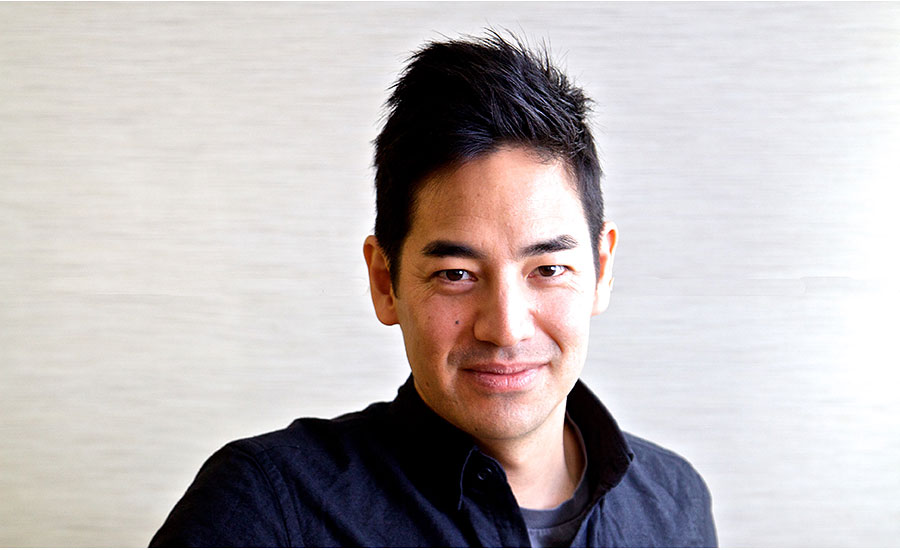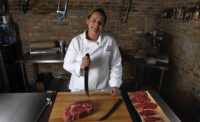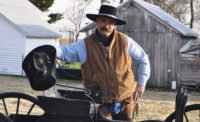Since their establishment, New York City steakhouses have played a significant role in the meat industry. These institutions have created a perennial culture around meat eating, an embrace of tradition, and an intense pride for American born and raised food. Today, these establishments remain embedded in New York City culture, but their role is beginning to change.
We spoke with Chef Craig Koketsu of Quality Meats — a sister restaurant to Smith & Wollensky steakhouse, the quintessential New York City steakhouse. Koketsu gives us insight into how steakhouses hold to their roots, yet have become innovative to appeal to meat eaters of all types.
Strassburger: How have you seen steakhouses change?
Koketsu: Steakhouses in general have changed tremendously, especially in the past 10 years. SM [Smith & Wollensky] is still the benchmark for a New York steakhouse, so we hold our traditions very closely. But I think with QM [Quality Meats], we wanted to re-imagine that steakhouse model and bring it into a different context. It has changed in a lot of ways from the sense of the feel of the actual restaurant.
When you step into SW, it has that clubby steakhouse feel. QM has a younger, more contemporary vibe. At QM, we’ve been written about as a female-friendly steakhouse — not just the decor, but also the menu offerings. The classics like SW will always have a place in New York, as they have carved their own niche into the history of steakhouses. At the same time, QM is creating a new standard for the next generation. That goes to the menu offerings obviously.
Our QM style of cuisine takes its inspiration from classic flavor combinations expressed in a new way. In addition to the traditional a la carte style, we offer composed dishes at QM, like a Hanger steak with black-pepper cherries, which is essentially a new version of classic steak with traditional steak sauce.
Strassburger: Do you believe that these steakhouses changes are mostly occurring on the NYC scene or are they universal?
Koketsu: We now have Quality Meats in New York and Miami Beach and are looking to grow in more cities. I have visited steakhouses in L.A., Miami and other major cities across the U.S. There is a lot happening outside of “the steak on a plate” across the country. To be competitive and with so many new options opening, steakhouses in general are becoming more creative and making their own unique mark on the steakhouse genre. We were doing it when we opened QM. Nobody had seen a Flat Iron steak with blackberries. It was hard for people to realize it in their head, but when they ate it, it all made sense.
Strassburger: What do you see customers asking for more these days?
Koketsu: I think customers are more interested and more adventurous in food in general. The younger generations are becoming much more savvy about cuts of beef. They are more willing to try things that aren’t necessarily conventional. People are looking to be stimulated. They’ve had good steaks, they’ve had 90-day dry-aged cuts of meat, so we are trying to push the envelope with what we can present to the customer. I don’t like to cook things just for novelty’s sake. I need to believe that it’s a great idea and that it tastes great. Those are my criteria before I put on something [simply] for the sake of it being interesting and new.
Strassburger: Aside from the things you’ve already mentioned, how else have you worked to differentiate your restaurants from the traditional steakhouse?
Koketsu: One thing that we know and adhere to before all else is that you have to serve a great steak. That’s the price of admission when you open a steakhouse, otherwise you’re not going to last; that’s taken for granted. It’s everything else that goes along with the steak — the sides and things. One of our biggest successes is one of our side dishes, our corn crème brûlée. If you mention QM to anyone, that’s what they will say. We serve a great steak, but you’re not just coming for steak. That’s where we like to set ourselves apart.
Strassburger: Your restaurant group is always working to be innovative and new, which is shown through your new location in Miami. What makes that location stand out?
Koketsu: We took an old NYC butcher and relocated him to Miami. He took up shop in a dilapidated art deco structure. There are references to the NY steak butcher house and references to the art deco vibe of Miami. The buildings in that area are all landmarked, so you can’t change a whole lot in the dining room. We wanted to showcase it and tie it into that raw, edgy feel of NYC QM. We wanted to reconcile those two very different sensibilities. NP





Report Abusive Comment